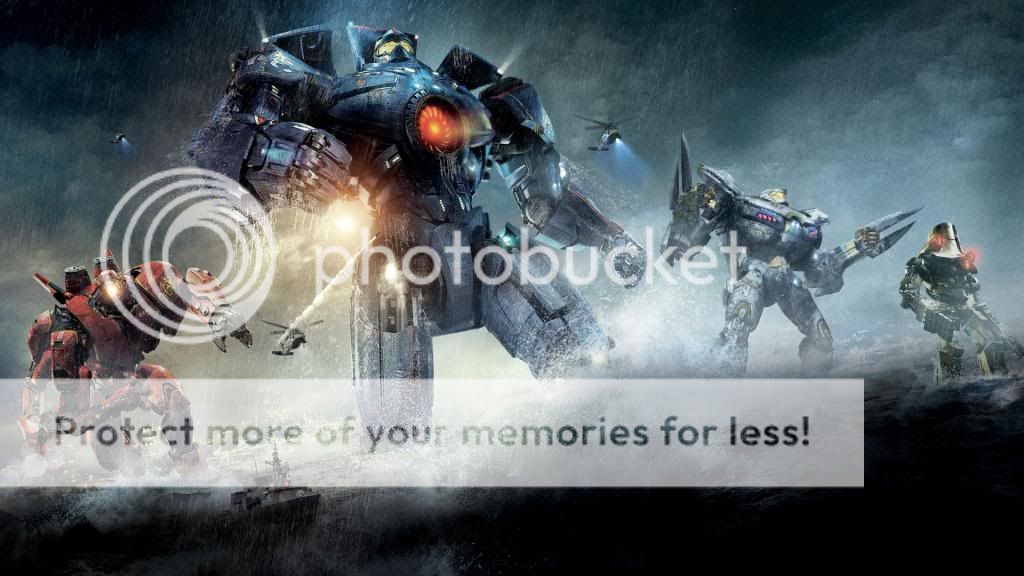

Deep in the Pacific Rim, a portal opens and Kaiju (“giant monsters” in Japanese) pour out of it. Once mankind realizes that their guns, jets, and tanks are highly inefficient against them they develop the Jaeger (“hunter” in German) Program: giant robots used to combat the Kaiju. Exposition tells us that Jaegers can only be properly piloted by two people and so, within the first 5 minutes of the film we witness a fight between a Jaeger and a Kaiju, the Jaeger piloted by Raleigh Becket (Charlie Hunnam) and his brother Yancy (Diego Klattenhoff). Yancy dies and Raleigh quits the game. 5 years later, we see that Raleigh had found work in construction and that the Jaeger Program is being dismantled.
A human resistance emerges in the form of the last surviving Jaegers and their pilots, and their leader, Stacker Pentecost (Idris Elba) recruits Raleigh to help fight the Kaiju and hopefully close the rift that’s opened in the deep depths of the Pacific ocean. We meet a few other Jaeger pilots who are typecast based on the countries that they belong to and the rest of the cast includes Rinko Kikuchi (Babel), Charlie Day (It’s Always Sunny in Philadelphia), Ron Perlman (the Hellboy series), Burn Gorman (The Dark Knight Rises), and Robert Kazinsky (True Blood).
That’s the entire story. Aliens attack us and we fight back and hope to win through with a suicide mission. That’s what the audience is stuck with for 132 minutes. The characters don’t really develop because even for cardboard cutouts, they’re simplistic; Charlie Day’s Newton, a scientist, and Ron Perlman's Hannibal Chow, a black market Kaiju parts salesman, are the only interesting characters in the film, because they’re both the comic relief and the only ones with the last minute answers; and the dialogue is just slightly less than serviceable. The film knows what it is and what it wants to be but it lacks the enthusiasm to deliver a truly fun show. It’s not thematically dark and it’s not fun, either. It just… exists.
Then there are the action sequences. The special effects in the film are absolutely astonishing, I think. I couldn’t really tell you because every time that a Kaiju appears it does so at night and during a rain storm. That’s two strikes. The third strike comes in the form of the action cinematography, which is mostly comprised of shots that are too close to the Kaiju and Jaegers. The editing has a fast pace to it (nothing too crazy) but combined with the darkness of night, constant rainfall, sweeping camera motions, and an overuse of close-ups the action sequences in the film are mostly incomprehensible. Sometimes I got the gist of what’d happened but I’d rather see what actually happens, blow by blow, rather than guess. Film is a visual medium and one of its major principals is “show, don’t tell”. If a film depicting Jaegers duking it out with Kaiju does a poor job of framing and lighting the action then we have nothing to work with.
I’d watched Pacific Rim in 2D, as it was initially shot before being converted to 3D in the post production stage, and had a tough time paying attention. I recommend that this film be viewed at home on Blu-ray, on a large LED or Plasma TV, and with an amazing surround sound system. At least on a smaller screen and with excellent, clear picture quality (unlike digital projection) one would be able to discern what actually transpires between those giant robots and giant alien monsters.
A barely existent script, special effects-driven imagery that’s almost impossible to see, and a runtime of over two hours makes for a bad time at the movies. I wasn’t bored during Pacific Rim, however it wasn’t ever interesting.



















































